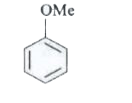Which of the following plant cycles is exhibited by Ectocarpus and kelps ?
Diplontic
Haplontic
Haplo-diplontic cycle
None of the above
The correct Answer is:C
To solve the question regarding the plant cycles exhibited by Ectocarpus and kelps, we can follow these steps:
Step 1: Identify the Organisms
Ectocarpus and kelps are both types of brown algae. Understanding their classification is essential for determining their life cycles.
Hint: Remember that Ectocarpus is a genus of brown algae, while kelps are large brown algae that belong to the order Laminariales.
Step 2: Understand the Life Cycle Types
In plants, there are different life cycle patterns, primarily:
- Haploid (n): The organism has one set of chromosomes.
- Diploid (2n): The organism has two sets of chromosomes.
- Haplodiplontic (or alternation of generations): This involves both haploid and diploid multicellular stages.
Hint: Familiarize yourself with the terms haploid, diploid, and haplodiplontic as they are crucial for understanding plant life cycles.
Step 3: Analyze the Life Cycle of Ectocarpus and Kelps
Both Ectocarpus and kelps exhibit a haplodiplontic life cycle, which involves an alternation of generations between multicellular haploid (gametophyte) and multicellular diploid (sporophyte) stages.
Hint: Look for the terms gametophyte (haploid stage) and sporophyte (diploid stage) when discussing plant life cycles.
Step 4: Confirm the Characteristics of the Life Cycle
In the haplodiplontic cycle:
- The sporophyte generation is diploid and produces spores through meiosis.
- The gametophyte generation is haploid and produces gametes through mitosis.
Hint: Remember that the presence of both multicellular stages is a key feature of the haplodiplontic life cycle.
Step 5: Conclusion
Based on the analysis, we can conclude that both Ectocarpus and kelps exhibit the haplodiplontic life cycle.
Final Answer: The correct answer is the haplodiplontic cycle.
Ectocarpus and kelps are both types of brown algae. Understanding their classification is essential for determining their life cycles.
In plants, there are different life cycle patterns, primarily:
- Haploid (n): The organism has one set of chromosomes.
- Diploid (2n): The organism has two sets of chromosomes.
- Haplodiplontic (or alternation of generations): This involves both haploid and diploid multicellular stages.
Both Ectocarpus and kelps exhibit a haplodiplontic life cycle, which involves an alternation of generations between multicellular haploid (gametophyte) and multicellular diploid (sporophyte) stages.
In the haplodiplontic cycle:
- The sporophyte generation is diploid and produces spores through meiosis.
- The gametophyte generation is haploid and produces gametes through mitosis.
Based on the analysis, we can conclude that both Ectocarpus and kelps exhibit the haplodiplontic life cycle.
Similar Questions
Knowledge Check
Which of the following compounds will exhibit tatutomerism?
A B
B C
C D
D
Which of the following exhibits mutualism ?
AMycorrhizae living on the roots of higher plants.BWasps pollinating fig inflorescence.CSea anemone often found on the shell of hermit crabDAll of these
Which of the following materials exhibits sublimation ?
View SolutionWhich of the following do not exhibit resonance.
View SolutionWhich of the following larval stage exhibit polyembryony?
View SolutionWhich of the following cannot exhibit hypercojugation -
View SolutionWhich one of the following complexes exhibit chirality?
View SolutionWhich of the following will exhibit aromatic character?

View Solution
